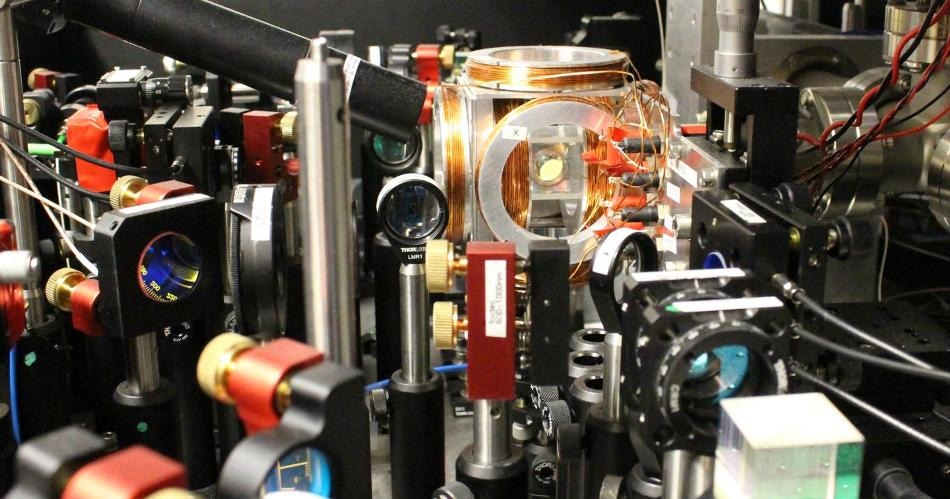Nov 1 2017
Although bouncing a single light particle from a single atom with a width lesser than one-billionth of a meter is no simple task, at present, scientists from the Centre for Quantum Technologies at the National University of Singapore have demonstrated that they can double the probability of a positive result.
The advancement may prove beneficial in quantum computing and metrology. The outcomes of the study were published in the Nature Communications journal on October 31, 2017.
 In the copper-encircled chamber at the centre of this setup at the Centre for Quantum Technologies in Singapore, photons bounce off a single atom. Controlling such interactions is important for quantum computing and metrology. CREDIT: Centre for Quantum Technologies, National University of Singapore.
In the copper-encircled chamber at the centre of this setup at the Centre for Quantum Technologies in Singapore, photons bounce off a single atom. Controlling such interactions is important for quantum computing and metrology. CREDIT: Centre for Quantum Technologies, National University of Singapore.
As part of their study, scientists Chin Yue Sum, Matthias Steiner, and Christian Kurtsiefer irradiated a carefully-trapped Rubidium atom with a red laser. They compared the amount of light scattered when the light comes from only one direction with the amount of light scattered when the light entered from two directions.
If an atom sends out a photon, the photon can go any direction. Our idea is that to get stronger interactions between single photons and single atoms, we want to reverse whatever the atom does. So here the illumination comes from all directions.
Matthias Steiner, Scientist, Centre for Quantum Technologies at the National University of Singapore
Initially, the red laser was focused through an intense-focusing lens located right before the atom. The atom was guided to be positioned at the focal point of lens. In this configuration, approximately one in five of the laser photons were found to be bounced off the atom.
Then, the laser beam was split, where one half was sent through the front and the other half sent through the back of the atom, where the laser passed again through an intensely focusing lens at the back to reach the atom.
Such a double-lens configuration is called as 4Pi microscopy, a super-resolution imaging method invented by Stefan Hell, a Nobel laureate. The technique has derived its name from the manner in which angles are depicted in three dimensions—4π forms a complete sphere.
In this configuration, where light is irradiated on the atom from both sides, the atom scattered nearly two in five photons—which is twice as that achieved with only one lens.
Apart from changing the direction of the photons, the atom also altered their spacing. In the case of laser light, the spacing between photons is random, where some are located very close to each other and others are separated by huge gaps. The research team found that once the photons passed through the atom, the probability of the photons to get closer together was lower. This indicates that there is a “nonlinear” interaction between the photons and the atom.
There’s a lot of physics to investigate in nonlinear interactions with photons.
Chin Yue Sum, Scientist, Centre for Quantum Technologies at the National University of Singapore
This phenomenon is highly significant for processing information contained in light, for instance, in optical quantum computing.